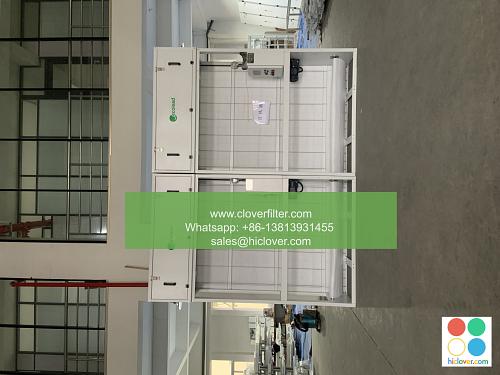Comparing Air Filtration Options: HEPA, Activated Carbon, and More

Air filtration is a crucial aspect of maintaining good indoor air quality, and with various options available, it’s essential to understand the differences between them. In this article, we’ll delve into the world of air filtration, exploring the pros and cons of HEPA filters, activated carbon filters, and other technologies, highlighting their applications in residential, commercial, and industrial settings.
Introduction to Air Filtration
Air filtration is the process of removing particulate matter, gases, and odors from the air to improve indoor air quality. Effective air filtration can help alleviate respiratory issues, such as asthma and allergies, and reduce the risk of infections. With the rise of air pollution, air filtration has become a vital component of indoor air quality management.
HEPA Filters: The Gold Standard
HEPA (High Efficiency Particulate Air) filters are widely considered the gold standard in air filtration. These filters are capable of capturing 99.97% of particles as small as 0.3 microns, including dust, pollen, and bacteria. HEPA filters are commonly used in residential air purifiers, commercial HVAC systems, and industrial cleanrooms. Their high efficiency and reliability make them an excellent choice for applications where clean air is paramount.
Activated Carbon Filters: Effective Against Gases and Odors
Activated carbon filters are designed to capture gases, odors, and chemicals from the air. These filters are often used in conjunction with HEPA filters to provide comprehensive air purification. Activated carbon is particularly effective against volatile organic compounds (VOCs), tobacco smoke, and cooking odors. They are commonly used in kitchen ventilation systems, bathrooms, and industrial applications where gas and odor removal is necessary.
Other Air Filtration Options
In addition to HEPA and activated carbon filters, there are other air filtration options available, including:
- Electrostatic filters: These filters use an electrostatic charge to attract and capture particles, making them a suitable choice for commercial and industrial applications.
- Ultraviolet (UV) light filters: These filters use UV light to kill bacteria and viruses, making them effective in healthcare settings and lab environments.
- Ionizers: These filters use ions to attract and capture particles, making them a popular choice for residential air purifiers.
Application Areas
Air filtration systems have a wide range of applications, including:
- Residential: Air purifiers, HVAC systems, and whole-house filtration systems.
- Commercial: Office buildings, restaurants, hospitals, and labs.
- Industrial: Cleanrooms, manufacturing facilities, and processing plants.
Conclusion
In conclusion, selecting the right air filtration option depends on the specific application and requirements. HEPA filters and activated carbon filters are effective solutions for removing particulate matter and gases, while other technologies, such as electrostatic filters and UV light filters, offer additional benefits in specific contexts. By understanding the different air filtration options and their applications, you can make informed decisions to improve indoor air quality and create a healthier environment for residential, commercial, and industrial settings.
It looks like you forgot to include a prompt! Please go ahead and provide one, and I’ll do my best to assist you. What’s on your mind?

